Zaheer Khan has been crucial for India with the bat as well In cricket, it is often seen that the batsmen get most of the credit. Whether it is a blazing start at the top of the order, or a sheet anchor’s innings in the middle or a calculated finish in the slog overs, it is all about the batsmen. While bowlers also get their dues periodically, the batsmen sit pretty on top of the cricketing food chain.Even while selecting a team, most teams go for strengthening their batting over their bowling. A 7-4 team is often called the most balanced, but a 6-5 team suits as well. In no team do you see more bowlers than batsmen, which goes to show how important the art of batting is. But it is not always batsmen who dominate the art in a cricket match. The bowlers have also had their say with the bat. The tail, a ridiculed bunch of batsmen who occupy the top positions in unwanted statistical tables – most ducks and lowest averages to name a couple – have also shone where the batsmen have failed, leading their side home in the most surprising circumstances.Perhaps the most famous of them all is Ian Bradshaw and Courtney Browne’s impeccable ninth wicket stand of 71 that helped West Indies win the Champions Trophy in 2003. Another incident involves Brett Lee and Shane Warne almost pulling off a stunner over England in the Edgbaston Test in the 2005 Ashes series, which is widely regarded as one of the best Test matches ever played. But how many times has the tail saved India from a certain loss? Have they been nearly good enough as other teams? Let’s look at 5 times India’s tail saved the team in international cricket:
#1 5th ODI - New Zealand vs India, 2003
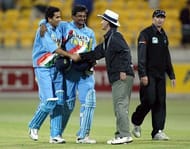
India was touring New Zealand in a much-hyped series before the World Cup, but it had gone all wrong for Ganguly’s men. They had been thoroughly outplayed in the two Tests as they didn’t reach 200 in any of the four innings.
Their misery continued in the ODI series, with India getting all out for 108 in the first ODI. A chase of 254 in the second ODI went awry, and once again, a poor performance with the bat saw India all out for 108 in the 3rd ODI and 122 in the 4th. Suffice to say, India were not in a very good place.
So after six straight losses, India went into the 5th ODI looking to set things right. They started well, with Zaheer Khan picking up Nathan Astle and Mathew Sinclair off successive deliveries. In his second over, he accounted for Chris Harris, leaving New Zealand reeling at 3-3. The Kiwis never really recovered from that despite decent scores from the middle order, and finally huffed their way to 168, courtesy 20 extras. It wasn’t a particularly threatening target, but India managed to lose their heads anyway.
Captain Ganguly went first ball, and Tendulkar followed him for a duck. Sehwag biffed his way to 45 off 40, but his dismissal sparked a collapse. From 66-3, India slumped to 116-7, looking done and dusted.
New Zealand was looking at a seventh straight win, but Zaheer Khan had other ideas. Joining Yuvraj Singh, the pair added 44 runs in 63 balls in a brilliant display of counter-attacking cricket. Zaheer, in particular, was severe on the bowlers, lashing three fours and a six.
With Yuvraj getting out and India still 9 away from victory, it seemed New Zealand still had a chance. But Zaheer Khan assuaged Indian hopes by taking them over the line with two wickets to spare.
#2 7th ODI - India vs Australia, 2007
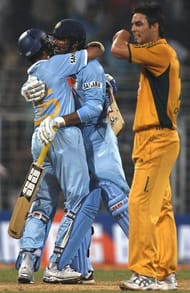
After emerging champions in the inaugural ICC World T20 in 2007, it was MS Dhoni’s first challenge as India’s ODI captain. But his side had been outplayed in the seven-match series and were trailing 4-1 heading into the final ODI at Mumbai, with the first match being washed out. India had consistently failed in all three departments, and it would take something special to bring the Australians down in the last ODI.
The fans had come in numbers as always, and playing in Mumbai, India hoped to give them something to cheer about. Some early surprises ensued as Murali Kartik was included in the team, with Rahul Dravid being rested. But, at the end of the day, the fans had reason to cheer him the most, as he single-handedly took down the Aussie line-up.
After Zaheer Khan removed Michael Clarke first up, it was left to Kartik to weave a web around Australia. He started by removing Brad Hodge, and then the dangerous Andrew Symonds. An Aussie counter-attack could have been on the cards, but Kartik was there to wrap things up. He wiped out the lower-middle order all by himself as he picked up 6-27, with Australia all out for 193.
It was India’s best bowling effort in the series, and a consolatory win seemed to be close but as always, the Indian batsmen found ways to get out cheaply. Ganguly and Dinesh Karthik got out for ducks, and Sachin followed soon after. Robin Uthappa tried his hardest to move the strike around but was soon running out of partners. As Irfan Pathan departed for India’s third duck, India stood at 64-6.
But Harbhajan gave Uthappa a hand, and the duo added a fifty-run partnership. Then both batsmen were dismissed in 20 balls, and at 143-8 with 50 runs to get, India looked done and dusted.
It was once again left to Zaheer Khan and bowling hero Murali Kartik to get India home. Zaheer was bounced, yorked and sledged, but he batted with surprising maturity, only stepping out to hit Brett Lee over long off. Kartik, on the other hand, played and missed, with all of his boundaries coming behind the ‘keeper. At one point, he actually nicked the ball, but the umpire didn’t hear it over the raucous noise the crowd was making.
Zaheer and Kartik batted for 11 overs for 52 runs – India’s second highest partnership – and finally steered them home amidst cheers and disbelieving shakes of heads.
#3 3rd ODI - India vs Australia, 1996
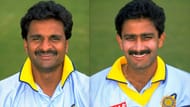
It was the Titan Cup triangular series involving India, Australia and South Africa. After a disappointing opening match against the Proteas, India needed to find their rhythm quickly against the Aussies.
Once again, Captain Sachin Tendulkar lost the toss and Australia chose to bat. India’s biggest problem against the South Africans was that they failed to take early wickets, something they did not repeat second time around. Mark Waugh went first and was duly followed by Michael Slater. Steve Waugh and Mark Taylor briefly threatened with a partnership, but with the former’s fall, Australia lost their way.
Mark Taylor scored his maiden ODI century, but none of the others could play their natural game as the Indian spinners – Anil Kumble and Sunil Joshi – choked the Australian innings. They couldn’t achieve sufficient lift-off in the final 10 overs as they only made 215/7.
It wasn’t a threatening total, but the Australian bowling line-up was a good one. India started cautiously but lost 4 wickets for 17 runs as they stood at 47-4, with only Sachin Tendulkar looking confident enough. A slow 79 partnership was put on by Tendulkar and Ajay Jadeja, and at 126-4, it looked like India would chase down the tricky target. But Jadeja’s dismissal opened the floodgates as India lost wickets in heaps.
Sachin tried his best to keep the innings together, but he too perished with the score at 164-8, with India still needing 52 more to win. As Javagal Srinath and Anil Kumble stood in the middle, Indian fans had lost hope. But Srinath found the middle of the bat as he picked up quick runs, scoring at a strike rate of 131.
Kumble played the ideal foil, blocking and blunting the Aussie bowling, but also rotating the strike. The Aussies who had expected a meek attitude were stunned at the counter-attack and bowled loose deliveries that Srinath promptly dispatched to the boundary.
The Bangalore crowd found its voice as two of its home-grown boys batted with their chins up against the Aussies. Every block was cheered and every run was egged on. The duo added 52 runs in 69 balls, the second highest of the match as India won with 7 balls to spare. It would be the perfect catalyst for the rest of the tournament as India beat South Africa in the final to give Tendulkar his first trophy as captain.
#4 1st Test - India vs Australia, 2010
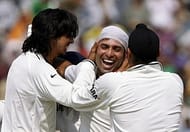
Australia were touring India in 2010, looking for their first win in India in 6 years. At Mohali, they very nearly got it. After choosing to bat, Australia put up a challenging total of 428, helped by Shane Watson’s century and Tim Paine’s handy 92. India replied in kind, with Virender Sehwag giving them a blazing start, and Sachin’s 98 anchoring the innings before they folded for 428. The pitch looked good, hadn’t slowed up a lot and was still helping the batsmen.
With a lead of 23, Australia would have hoped to put on a huge lead, and they certainly started in the right fashion, putting on 87 for the first wicket. But on the fourth day, the pitch started to show its demons. Watson’s dismissal started a domino effect as Australia lost wickets at regular intervals. All the Indian bowlers picked up wickets as Australia lost 10 wickets for 105 runs and the innings folded up at the score of 195.
India required a target of 216, which would be extremely difficult on the Mohali pitch which was spitting and rearing. Going into bat after tea, India lost Gautam Gambhir in the first over. After a brief partnership, three more wickets fell as India went in at 55/4 at stumps on day 4.
The procession continued on the final day, as India were reduced to 124-8, with Ishant Sharma giving company to an ailing VVS Laxman. Laxman, who has always been Australia’s nemesis, couldn’t even run because of a sore back, and it seemed he wouldn’t repeat any magic in Mohali. Ishant Sharma had shown no batting prowess whatsoever in his career, and India looked doomed.
But Ishant stood defiant and the Aussies were being stonewalled. He pushed forward with the straightest of bats and defended everything with soft hands, even driving a couple through the covers. Laxman on the other end played delightful strokes, but wincing every time he had to move his back.
Ricky Ponting changed 5 bowlers in 12 overs as he tried to induce a breakthrough, but Ishant was solid. The duo put up a partnership of 81 before Ishant was incorrectly given out LBW. Pragyan Ojha shared a couple of anxious moments with Laxman, before a wayward delivery from Johnson sealed India’s win. Laxman had done it again, but the credit was equally shared by Ishant, who scored a critical 31 off 92. It remains India’s only 1-wicket win in Test matches.
#5 Final - India vs West Indies, 1983
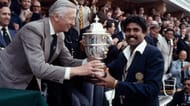
It was the mother of all matches. Fans, critics and bookmakers around the world salivated as two mismatched teams met in the final of the 1983 World Cup final. West Indies were the World Champions two times in a row and well on their way to make it three. India had overcome some big names in the tournament but had shown inconsistency in all departments.
The toss was over, and India was put into bat. Indians across the world huddled in front of TV sets or listened to radios as Michael Holding, Joel Garner and Andy Roberts prepared to bowl to Sunil Gavaskar, Kris Srikkanth and Sandeep Patil.
Disaster struck soon. Gavaskar was caught off Roberts with the score only on two. But Srikkanth and Amarnath nudged the score around, with the former hitting a flurry of boundaries. After scoring 7 fours and a six, Srikkanth joined his opening partner in the pavilion.
The West Indians bowled with a fury, as the Indians collapsed under the weight of their combined attack. Any hopes of Kapil Dev repeating his Tunbridge Wells masterclass was undone by Larry Gomes as India stood at 130-7, with Roger Binny departing.
Though nobody expected India to dictate terms, they obviously wanted them to put up a better show. The West Indians were clearly overjoyed, but the pitch had slowed up\ and the faster bowlers were not able to get it to move quick enough. Sandeep Patil, who was ably supported by Madan Lal, steered the strike around to help India pass the 150-run mark.
With his dismissal, it was the turn of Syed Kirmani – who ably supported Kapil Dev against Zimbabwe – to take up the mantle and take India to a respectable score. Even with the ninth wicket going down at 161, India did not falter. Another crucial 22-run partnership bloomed between Kirmani and last man Balwinder Sandhu. As the pitch got slower and slower, the conditions helped the Indians play themselves in. Finally, with 32 deliveries left, India were bowled out for 183.
The last four batsmen had contributed 44 runs between them. Inspired by their tail’s tenacity and their captain’s words, India rode the storm to help themselves to their first World Cup win, upsetting the highly favoured West Indian team.
Follow IPL Auction 2025 Live Updates, News & Biddings at Sportskeeda. Get the fastest updates on Mega-Auction and cricket news
